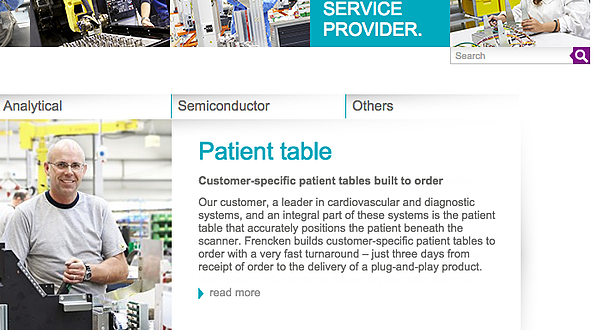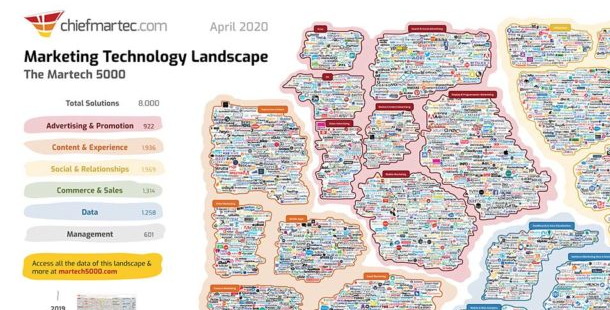Why as a manufacturing company (like many a SaaS company) you should spend more than 50% of your budget on marketing and sales
In collaboration with MT/Sprout - The SaaS market is growing fast and hard, actually similar to the manufacturing industry at the beginning of the industrial revolution. Here's what the manufacturing industry can learn from this, says Emiel Kanters of Webs.
Whereas software was traditionally purchased as a product, today it is increasingly done through a subscription model. The software is delivered via the cloud as a service - or Software as a Service (SaaS). The number of acquisitions of IT companies with a SaaS business model is increasing rapidly. Vendors and investors are jumping on the trend, throwing additional oil on the fire, which is also causing valuations to rise rapidly. The SaaS market is therefore very similar to that of the manufacturing industry at the beginning of the industrial revolution when a host of new technologies appeared.
Mercedes
When Daimler developed the internal combustion engine in 1885, a foundation was laid for the success we still know today as one of the strongest brands; Mercedes. Austrian Emil Jellinek was a key driver in this. He had an eye for the market and commissioned Daimler to build 36 cars after winning a prestigious race in Nice with a Daimler. He ran that race under the team name Mercedes (after his daughter) and so Mercedes gained name and more importantly, fame.
These 36 cars he managed to sell through good marketing (the fame) and sales (the name) even before they were produced. After that, things moved quickly and the foundation was laid for the Mercedes as we know it today. At its core, it has been a mix of technology (the car), capital, marketing and sales. And we still see this mix in SaaS companies today. And in contrast to the capital-intensive manufacturing industry, a lot of capital in the software industry actually goes to marketing and sales. This is where the manufacturing industry lags heavily behind. While the opportunities in the market are actually no different.
More marketing and sales
Various surveys of SaaS companies reveal a very strong commitment to marketing and sales. Between 20 and 80 percent of the total budget is spent on marketing and sales. On average, we end up with about 50 percent of the total budget. Just look at companies like Salesforce and HubSpot.
From Salesforce's 2020 annual report, we see that marketing and sales costs are 46 percent of total revenue. And at Hubspot in 2019, we see a similar figure of 50 percent. And this kind of investment does them no favors given the growth in revenue and profitability in recent quarters.
These budgets are so hefty because these companies want to capture market share relatively quickly. Of course, this takes a heavy toll on their financial housekeeping, but they do so based on the motto: Those who bet heavily on commerce create growth. Granted: SaaS companies can do that because the cost per product is extremely low and do not see capital disappearing into costly and capital-intensive manufacturing processes, material procurement and inventories. Software is easily replicable and therefore easy to scale, yet that should not be the excuse for manufacturing companies to stop investing in their commercial teams.
Three insights
Spending more on marketing and sales, however, only makes sense if it is done with policy. Three insights help.
1. Shift your focus from technology to customer
The manufacturing industry primarily has an internal product/technology focus. They are mostly concerned with technological innovation and prefer to look inward rather than outward. Technology-focused people are less concerned with valorizing and commercializing that technology. The adage, even at the top, is often: 'Things are going well anyway, sales were fine, and so was profitability'.
A more market and customer-oriented approach could help these types of companies achieve faster growth. If you start from customer and market models, new questions arise that come to your organization. You have to have the business developers and engineers who are cut from the right cloth. So bring in a COO from the SaaS industry and let him or her reshape your commercial team.
2. Show ambition as an entrepreneur
Many manufacturing companies are highly specialized and act in a niche market. This is because the founder saw the gap in the market from his technological knowledge. Often this founder is still involved and people from the first hour have moved on to management positions. As a result, ambition and drive are often lacking to achieve rapid growth.
ASML only really took off after they left under the wings of Philips. And don't think that with the hiring of one or two young digitally oriented commercialists things are going to change. These will get stuck after a few months and quickly look for another job. You can say it's not working for you and keep doing what you were doing. But then you actually know how ambitious you really are.
3. Step out of the closed chain
In the manufacturing industry, people know each other. This is because it is often a complex chain of OEMs and their suppliers. They need each other and are stuck together, so to speak. They meet in closed circles and at (niche) trade fairs. Us knows us, we know how it works and we don't need a website, social media and digital sales for that. We just call each other. I've heard that sound more than once. Nice that that's how it works but I'm sure there are other realities and they work just fine together. It's and and.
So yes, wonderful if you have a nice role in the closed chain or niche market but it also makes you vulnerable. So commit to multiple audiences/markets and take the time to discover where else your technology can be used. You won't be able to do that quickly or sufficiently quickly with the same people and ideas you already have. And behave more like a SaaS company and spend substantially more on your commercial process. Do this along new models, with new people and new organizational forms. Guaranteed that your growth can then also increase exponentially in the making.

Want to get the most out of HubSpot? Subscribe to our newsletter, follow us on LinkedIn, or attend our HubSpot User Days!
Explore HubSpot User DaysShare this
You May Also Like
These Related Stories

Many B2B companies miss important opportunities

Dutch B2B companies have been asleep for 15 years


